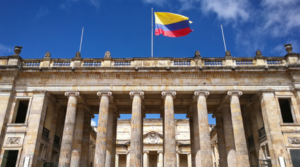
Geographical indications (GIs) are a crucial part of the international trademark ecosystem. Beyond identifying a product’s place of origin, they can protect its producer’s inherent cultural values and prevent others from promoting goods that do not meet certain standards. Unfortunately, their importance is also undercut by a scattershot approach to recognising and enforcing them around the world.
WTR has gathered perspectives on this issue from trademark experts featured in our upcoming Global Leaders – particularly those in the European Union, the United States and China. Their responses emphasise that the IP community would do well to develop a more harmonised international approach to GIs, mutually benefitting producers and consumers of regionally specific goods.
The danger of divergent approaches
There is a consensus in the trademark community that GIs offer numerous advantages, which rights holders can and should use to their benefit. However, unifying their protection across jurisdictions is another matter entirely.
European IP firm HGF extolls the work that EU regulators have done to boost enforcement across the continent but laments that it will likely “take a lot of time for the rest of the world to catch up”. Marina Perraki of Greece’s Tsibanoulis & Partners builds on this, pointing out that changes across jurisdictions are needed to give GI holders crucial “legal certainty when developing business plans and engaging in commercial activity”.
But the fact that the European Union’s approach to GIs differs significantly from that of the United States continues to cause friction. EU member states use a specific system for protecting GIs, separate from traditional trademark law; the United States, conversely, typically protects them as “trademarks, collective marks or certification marks, and under common law doctrine”, explains Max Vern of Amster Rothstein & Ebenstein LLP. These contrasting perspectives are a significant barrier to international harmonisation and provide opportunities for bad actors.
China is also becoming a major player in this space. Yet despite the country’s recent bilateral agreement with the European Union – which ensures protection for hundreds of European and Chinese GIs – confusion remains rife.
Ray Lei Zhao of Unitalen Attorneys at Law in China suggests that foreign rights holders repeatedly “ignore the importance of protecting [a GI’s] corresponding Chinese translation” by failing to acknowledge that Chinese consumers rely on Chinese names when purchasing foreign products. Such misunderstandings of China’s unique market leave “a protection gap open to malicious trademark applicants”, which in turn can be damaging to both rights holders and consumers.
The pursuit of harmony
The lack of coordination among international approaches to GIs will require tremendous effort and cooperation to overcome.
However, according to our global leaders, there is light at the end of the tunnel, if only because GIs are growing too valuable – monetarily and culturally – to ignore.
Peter Ruess of Germany’s Arnold Reuss spotlights: “The more often that vital players have a stake in the GI game, the more likely it is that [GIs] will rise higher on the global agenda.” This goes hand in hand with Perraki’s belief that a harmonised approach is on the horizon because of the economic importance of levelling the playing field and ensuring “that all relevant rights are protected without over-restricting the smooth functioning of the market”.
While the specifics of any such strategy are presently unclear, it will need certain key facets in order to succeed.
Using the EU-China bilateral GI agreement as a model, WTR’s trademark experts intimate that all future cooperation must balance the approaches of different jurisdictions, with the key goals being:
- to protect producers;
- to bring authentic products to consumers; and
- to ensure trade benefits for all parties involved.
“Careful coordination with and supplementation by other IP rights, especially trademarks rights, is [also] crucial,” Michael Ritscher of Swiss firm MLL Legal insists.
The road ahead
Acknowledgement of the need for common ground in the GI landscape does not guarantee rapid unification of international protections. It is imperative that experts scrutinise any proposed agreements, ensuring continued progress and eschewing further divergence among the European Union, the United States and China
While this sounds daunting, our thought leaders remain optimistic that harmonisation – at long last – is on the horizon, much to the benefit of producers and consumers worldwide.
Global Leaders is WTR’s annual opportunity to showcase some of the world’s top private practice trademark experts, allowing them space to share valuable insight into the most pressing issues dominating the IP space and their thoughts for the future. The next edition is due to be published in July 2023.
- SEO Powered Content & PR Distribution. Get Amplified Today.
- EVM Finance. Unified Interface for Decentralized Finance. Access Here.
- Quantum Media Group. IR/PR Amplified. Access Here.
- PlatoAiStream. Web3 Data Intelligence. Knowledge Amplified. Access Here.
- Source: https://www.worldtrademarkreview.com/article/the-growing-need-internationally-harmonised-approach-gis
- :has
- :is
- :not
- 2023
- a
- According
- acknowledge
- across
- actors
- advantages
- agenda
- Agreement
- agreements
- All
- Allowing
- also
- among
- an
- and
- annual
- Another
- any
- approach
- approaches
- ARE
- around
- AS
- At
- Authentic
- Bad
- Balance
- barrier
- BE
- because
- becoming
- being
- belief
- benefit
- benefits
- benefitting
- Beyond
- boost
- both
- bring
- builds
- business
- but
- by
- CAN
- Catch
- Cause
- certain
- certainty
- Certification
- Changes
- China
- Chinas
- chinese
- Collective
- commercial
- Common
- community
- confusion
- Consensus
- Consumers
- continent
- continued
- continues
- cooperation
- coordination
- Corresponding
- country’s
- crucial
- cultural
- culturally
- damaging
- DANGER
- Despite
- develop
- developing
- different
- Divergence
- do
- does
- done
- due
- Economic
- ecosystem
- edition
- effort
- end
- enforcement
- enforcing
- engaging
- ensure
- ensures
- ensuring
- entirely
- especially
- Ether (ETH)
- EU
- European
- european union
- experts
- Explains
- facets
- fact
- failing
- featured
- field
- Firm
- For
- foreign
- friction
- from
- functioning
- further
- future
- game
- gap
- gathered
- Give
- Global
- Goals
- Goes
- goods
- Ground
- Growing
- guarantee
- hand
- Have
- higher
- holders
- horizon
- However
- HTTPS
- Hundreds
- identifying
- if
- imperative
- importance
- in
- indications
- inherent
- insight
- International
- internationally
- intimate
- into
- involved
- IP
- issue
- issues
- IT
- ITS
- July
- jurisdictions
- Key
- Lack
- landscape
- Last
- Law
- leaders
- Leave
- Legal
- light
- likely
- LLP
- Long
- Lot
- major
- Market
- Matter
- max
- Meet
- member
- Michael
- model
- more
- most
- much
- must
- mutually
- names
- Need
- needed
- next
- numerous
- of
- offer
- often
- on
- only
- open
- opportunities
- Opportunity
- Optimistic
- or
- order
- Origin
- Other
- Others
- our
- out
- Overcome
- part
- particularly
- parties
- partners
- perspectives
- Place
- plans
- plato
- Plato Data Intelligence
- PlatoData
- player
- players
- playing
- practice
- pressing
- prevent
- private
- Producers
- Products
- Progress
- promoting
- proposed
- protect
- protected
- protecting
- protection
- provide
- published
- purchasing
- pursuit
- rapid
- recent
- recognising
- Regulators
- relevant
- rely
- remain
- remains
- REPEATEDLY
- require
- responses
- REST
- rights
- Rise
- road
- separate
- Share
- should
- showcase
- significant
- significantly
- smooth
- some
- Space
- specific
- stake
- standards
- States
- Strategy
- succeed
- such
- Suggests
- Swiss
- system
- that
- The
- The Future
- the world
- their
- Them
- There.
- These
- they
- this
- those
- thought
- thought leaders
- time
- to
- too
- top
- trade
- trademark
- trademarks
- traditional
- tremendous
- TURN
- typically
- under
- unfortunately
- union
- unique
- United
- United States
- upcoming
- use
- Valuable
- Values
- vital
- WELL
- when
- which
- will
- with
- without
- Work
- world
- world’s
- worldwide
- would
- yet
- zephyrnet
- Zhao













